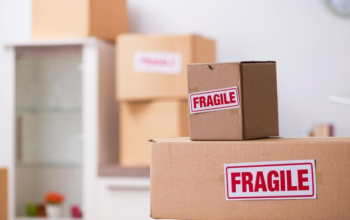The lease signing process can be hard for both owners who want to rent out their property and renters who are looking for a new place to live. Do not worry; we are here to make everything clear. As in a dance, landlords and tenants need to be on the same page when it comes to the formal and practical parts of renting. Allow me to assist you in this process.
Grasping the Nuances of the Lease Agreement
Landlords and tenants have their rights and duties laid forth in a legally enforceable contract known as a lease agreement. Think of it as a road map that will lead you to your rental car.
| Component | Explanation |
| Parties Involved | Identifies the names and contact details of the landlord and tenant(s). |
| Property Description | Details the rental property, including its address and any specific conditions of use. |
| Lease Duration | Defines the lease period, including start and end dates. |
| Rent Amount | Specifies the rent amount and the date it is due each month. |
| Security Deposit | Describes the security deposit, including its amount, purpose, and refund conditions. |
| Maintenance Responsibilities | Specifies who is responsible for upkeep and repairs of the property. |
| Rules and Regulations | Includes any property rules and regulations, like pet policies or noise limits. |
| Termination Procedures | Outlines the lease termination process, including notice periods and requirements. |
| Signatures | Features the signatures of both parties, signifying agreement to these terms. |
Understanding these components is crucial before signing a lease agreement.
Preparing for Lease Signing: A Checklist
Preparation is key! Before you put pen to paper, there is a checklist that you must complete as a renter or landlord. Before you sign the lease, make sure you’re properly prepared by going over our exhaustive checklist.
- Review the lease agreement thoroughly;
- Clarify any doubts or seek legal advice if necessary;
- Inspect the property to ensure it meets your expectations;
- Discuss and agree upon any necessary repairs or improvements;
- Have the necessary funds ready, including the security deposit and first month’s rent;
- Prepare identification and financial documents;
- Arrange for a reliable witness or notary public if required;
- Set up utilities and transfer any necessary accounts.
By following this checklist, you’ll be well-prepared for a smooth lease signing process.
Essential Lease Terms for Both Parties
It is critical that you fully grasp all of the lease’s provisions. Some of these terms include maintenance duties, the length of the lease, and the amount of rent. We’ll explain these concepts in layman’s terms.
| Aspect of Lease | Details |
| Rent Amount | Monthly rent amount and payment details. Please note the chosen payment method and the due date. Understand the grace periods and any late fee policies. |
| Lease Duration | The lease term is outlined. Typical terms range from six months to a year or longer. Pay attention to clauses regarding renewal or ending the lease. |
| Maintenance Responsibilities | Specifies who must pay for repairs and upkeep of the property. In most cases, tenants are responsible for smaller maintenance tasks, while landlords tackle larger structural difficulties. Get to know the steps involved in submitting a maintenance request. |
Understanding these fundamental lease terms ensures a transparent rental agreement.
The Role of Security Deposits
Deposits meant as security can frequently lead to disputes and misunderstandings. Let’s make sure everyone understands what they are, how to deal with them, and why they’re important.
| Aspect of Lease | Details |
| Purpose of Security Deposits | Landlords are protected against property damage or unpaid rent by security deposits. If the tenant fulfills all of the lease’s conditions, they will be able to get their security deposit returned when the lease ends. |
| Handling Security Deposits | The deposit amount, which is often one or two months’ rent, should be stated in the lease. Deposits must be collected, held, and returned by landlords in accordance with the applicable legal requirements. To avoid disagreements, it’s a good idea to take pictures of the property during the move-in inspection. |
Conducting a Thorough Property Inspection

Before signing the lease, a property inspection is crucial. This section will guide you on how to conduct an effective inspection and why it’s important for both landlords and tenants.
Importance of Property Inspections
- Prior to tenancy, a property inspection clarifies the property’s condition for both parties;
- In the event that any damages occur during the lease term, it helps to avoid conflicts over those damages;
- Take pictures or write out a report of any problems that are already there.
Steps for a Property Inspection
- Collaborate with the manager or landlord to arrange for the inspection;
- Together, inspect the property and make a list of any damage that may already be there;
- Make note of the state of each area and object using a checklist;
- Get everyone on the same page regarding any upgrades or repairs that are required;
- For future reference, retain a duplicate of the inspection report.
A thorough property inspection promotes transparency and can save both landlords and tenants from future conflicts.
Legal Obligations and Rights
Both parties have legal rights and obligations. Knowing these is like having a rulebook for your rental experience.
Tenant’s Rights and Responsibilities
- The right to a safe place to live that isn’t harmful to your health;
- The duty to pay rent on time and follow the rules of the lease;
- The right to privacy, and landlords must give notice before entering;
- The duty to report problems and ask for fixes right away.
Landlord’s Rights and Responsibilities
- The right to receive rent payments on time;
- The responsibility to maintain the property in a safe and habitable condition;
- The right to enter the property for inspections or repairs with proper notice;
- The responsibility to return the security deposit in accordance with the lease and applicable laws.
Understanding these legal obligations and rights is essential for a harmonious landlord-tenant relationship.
Negotiating Lease Terms
The skill of negotiation is paramount when it comes to leasing agreements. Get the hang of negotiating conditions that work for everyone involved.
- Prepare: Find out what other rental units in the neighborhood are renting for to get a feel for the market;
- Communicate: Be honest about what you need and what worries you;
- Compromise: Be flexible and open to negotiating on issues like rent, lease period, and who is responsible for what in terms of maintenance;
- Get It in Writing: Make sure that the lease agreement specifies any modifications that have been mutually agreed upon.
Do not be afraid to negotiate in order to get a lease that is more satisfactory to both of you.
Signing the Lease: The Final Step
The signing of the lease is the last and most important step. So that you may make it official with confidence and knowledge, we will guide you through the procedure.
- Before signing, be sure to read the full lease;
- Make sure there are no handwritten changes and that all spaces are filled out;
- Fill out the signature areas as shown on the document;
- Be sure to bring any necessary witnesses or notaries along;
- Make sure you have a copy of the signed lease on file.
Post-Lease Signing Responsibilities

The journey doesn’t end at signing. There are responsibilities that follow, and we’ll outline what you need to do after the lease is signed.
- Payment: Pay rent on time according to the agreed-upon schedule;
- Maintenance: Fulfill maintenance responsibilities as outlined in the lease;
- Communication: Report any issues promptly to the landlord or property manager;
- Documentation: Keep records of rent payments, communications, and repairs;
- Renewal or Termination: Plan ahead for lease renewal or exit according to the lease terms.
Being diligent in your post-lease responsibilities ensures a positive rental experience.
Dealing with Lease Renewals and Exits
What happens when the lease ends? Whether you’re renewing or exiting.
Lease Renewal
- Discuss renewal options with the landlord well in advance of the lease expiration;
- Review and negotiate any changes to the terms;
- Sign a lease renewal agreement if both parties agree.
Lease Exit
- Provide proper notice to the landlord if you intend to move out at the end of the lease;
- Complete a move-out inspection with the landlord to document the property’s condition;
- Understand the process for receiving your security deposit refund.
Planning for lease renewals or exits ensures a seamless transition for both parties.
The Impact of Local Laws
Local laws can significantly impact the lease signing process.
- Familiarize yourself with local rent control ordinances, eviction procedures, and tenant rights;
- Ensure that your lease agreement complies with all applicable local laws and regulations;
- Consult legal counsel or local housing authorities for specific guidance.
Staying informed about local laws is crucial to avoid legal complications during your lease.
Conclusion
The process of signing a lease is a vital aspect of the relationship between landlord and tenant. Gaining a thorough understanding of each stage, being aware of your rights and duties, and preparing effectively can lead to a seamless and positive renting experience. Keep in mind, being well-informed is key, particularly in matters of leasing.
FAQ
1. What should I look for in a lease agreement?
Ensure that the lease clearly outlines rent amount, payment schedule, lease duration, maintenance responsibilities, and terms of the security deposit.
2. How can I negotiate lease terms effectively?
Be clear about your needs, understand the market, and communicate openly with the other party. It’s about finding a win-win situation.
3. What is the importance of a property inspection?
A thorough inspection helps identify any existing issues before moving in, protecting both parties from future disputes.
4. Can I break a lease agreement?
Breaking a lease is possible but often involves legal and financial consequences. It’s best to understand these before making any decision.
5. What happens when a lease expires?
Upon expiration, you can either renew the lease, negotiate new terms, or choose to exit the rental agreement following the outlined procedures.



